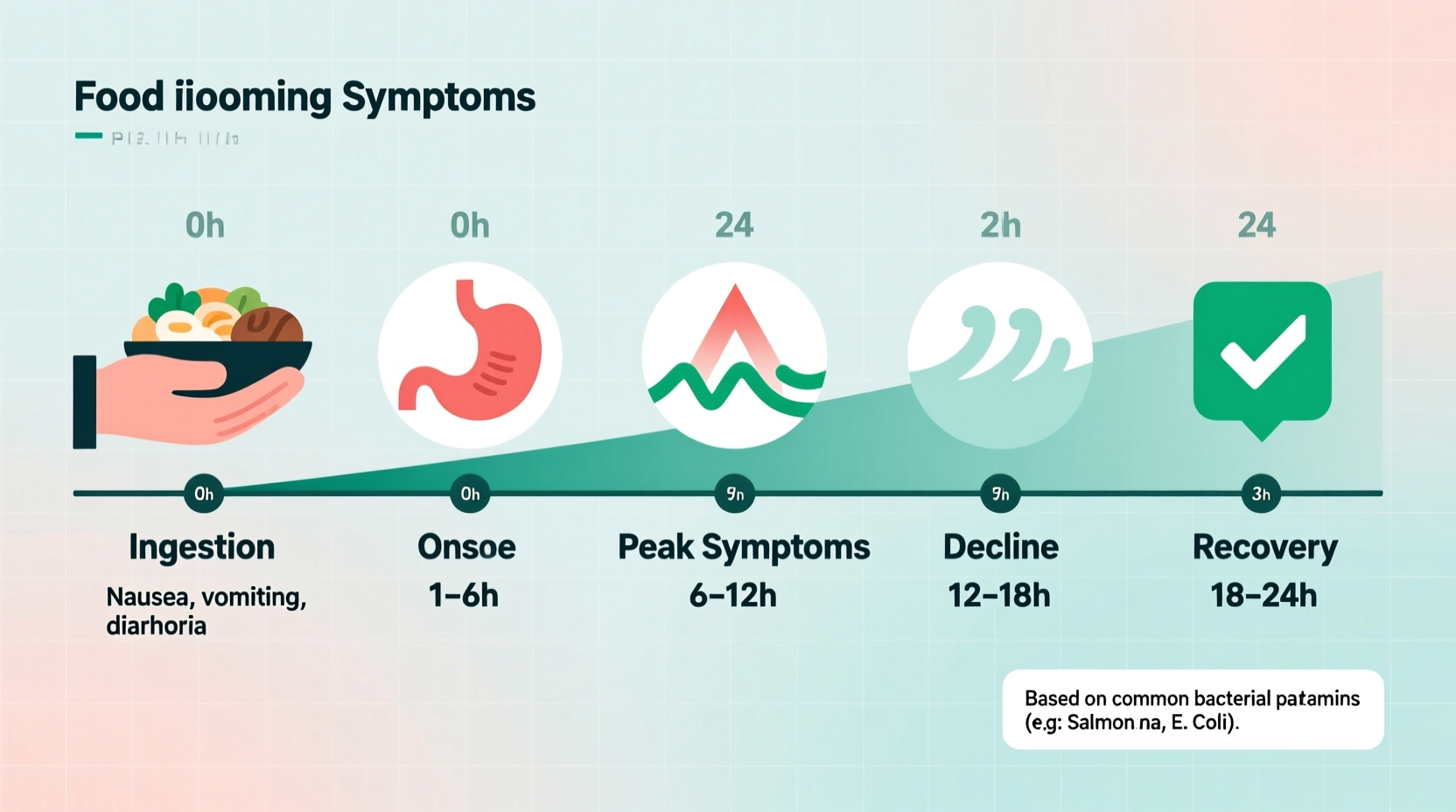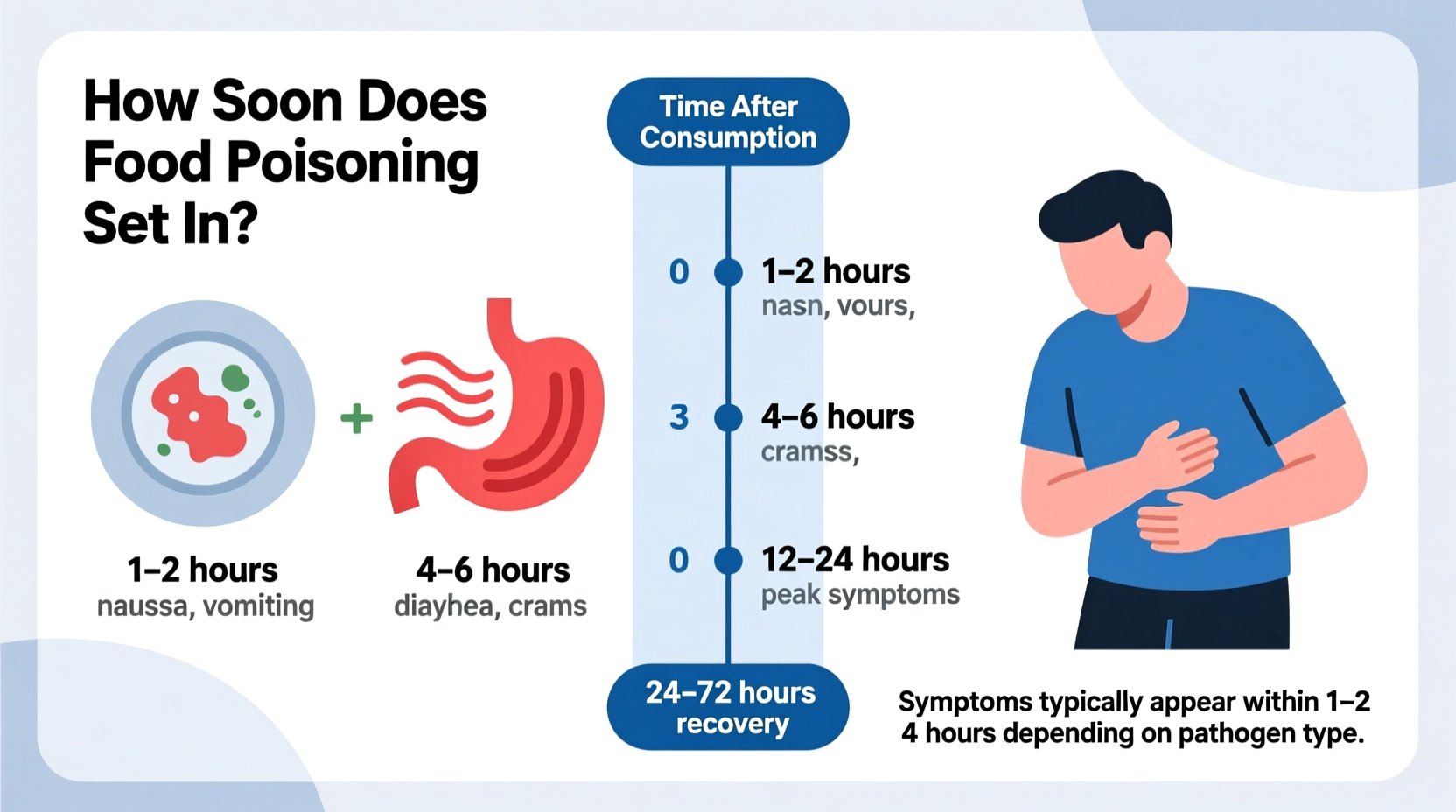Food poisoning symptoms typically begin 6 to 24 hours after consuming contaminated food, though onset time varies significantly by pathogen type. Norovirus symptoms can appear in as little as 12 hours, while Listeria may take up to 70 days to manifest. Most cases show symptoms within 24-48 hours.
Experiencing stomach cramps after a meal? You're probably wondering exactly how soon does food poisoning set in and whether your symptoms match typical patterns. Understanding the timeline could mean the difference between managing symptoms at home or seeking urgent medical care.
Food Poisoning Onset Timeline: What to Expect
When you've potentially consumed contaminated food, timing is critical. The window for symptom onset depends primarily on the specific pathogen involved. Here's a comprehensive breakdown of common foodborne illnesses and their typical incubation periods:
| Pathogen Type | Onset Time Range | Common Sources | Duration |
|---|---|---|---|
| Norovirus | 12-48 hours | Raw shellfish, contaminated water, ready-to-eat foods | 1-3 days |
| Salmonella | 6-72 hours (avg 12-36) | Raw eggs, poultry, meat, unpasteurized dairy | 4-7 days |
| E. coli | 1-10 days (avg 3-4) | Undercooked ground beef, raw produce, unpasteurized juice | 5-10 days |
| Listeria | 1-70 days (avg 1-4 weeks) | Ready-to-eat deli meats, soft cheeses, unpasteurized milk | Variable |
| Campylobacter | 2-5 days | Raw or undercooked poultry, unpasteurized milk | 2-10 days |
| Staphylococcus | 30 min-8 hours (avg 1-6) | Foods handled with bare hands (salads, sandwiches) | 1-2 days |
This CDC reference chart confirms that different pathogens have dramatically different incubation periods, which explains why you might feel fine after one questionable meal but get sick immediately after another.
Factors That Influence Onset Time
Several variables affect how soon food poisoning symptoms begin after exposure:
Pathogen Characteristics
The specific microorganism determines the minimum infectious dose and replication rate. For instance, Staphylococcus aureus produces pre-formed toxins that cause rapid symptoms (sometimes within 30 minutes), while Listeria monocytogenes requires time to multiply in your system before causing illness.
Individual Health Factors
Your immune status significantly impacts symptom onset. According to the FDA food safety guidelines, people with compromised immune systems, pregnant women, young children, and older adults often experience faster symptom development and more severe illness.
Amount Consumed
The quantity of contaminated food matters. Consuming a larger dose of pathogens typically leads to quicker symptom onset. This explains why one person at a meal gets sick immediately while others remain unaffected.
Early Warning Signs to Monitor
Recognizing initial symptoms helps determine how soon does food poisoning set in for your specific case. Watch for these early indicators:
- Sudden stomach cramps or abdominal pain
- Nausea without obvious cause
- Unexpected fatigue or weakness
- Mild fever (99-100.4°F / 37.2-38°C)
- Loss of appetite
These preliminary symptoms often precede more severe vomiting and diarrhea by several hours. The Mayo Clinic notes that early intervention can sometimes mitigate symptom severity.
When to Seek Medical Attention Immediately
While most food poisoning resolves without treatment, certain symptoms require prompt medical care regardless of how soon food poisoning sets in:
- Signs of dehydration (dark urine, dizziness, dry mouth)
- Blood in vomit or stool
- Diarrhea lasting more than 3 days
- Fever above 101.5°F (38.6°C)
- Numbness or tingling sensations
- Symptoms following high-risk food consumption (wild mushrooms, pufferfish, etc.)
The World Health Organization emphasizes that vulnerable populations should seek care at the first sign of foodborne illness.

What to Do While Monitoring for Symptoms
If you've potentially consumed contaminated food but haven't developed symptoms yet, take these proactive steps:
- Stay hydrated with small sips of clear fluids
- Document everything consumed in the past 72 hours
- Avoid anti-diarrheal medications initially (they can prolong some infections)
- Refrigerate leftovers for potential testing if illness occurs
- Monitor household members for similar symptoms
This approach helps healthcare providers identify the specific pathogen if symptoms develop, which is crucial since how soon food poisoning sets in directly relates to the causative agent.
Preventing Future Incidents
Understanding food poisoning timelines helps prevent future occurrences. Implement these evidence-based strategies:
- Cook poultry to 165°F (74°C), ground meats to 160°F (71°C)
- Refrigerate perishables within 2 hours (1 hour if above 90°F/32°C)
- Wash hands thoroughly before handling food
- Use separate cutting boards for raw meats and produce
- Follow proper canning procedures for home-preserved foods
The CDC reports that proper food handling reduces foodborne illness risk by up to 70%. Remember that symptom onset time varies, so prevention remains your best defense against food poisoning.











 浙公网安备
33010002000092号
浙公网安备
33010002000092号 浙B2-20120091-4
浙B2-20120091-4